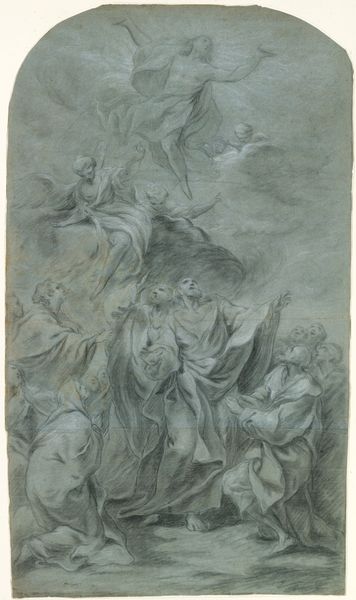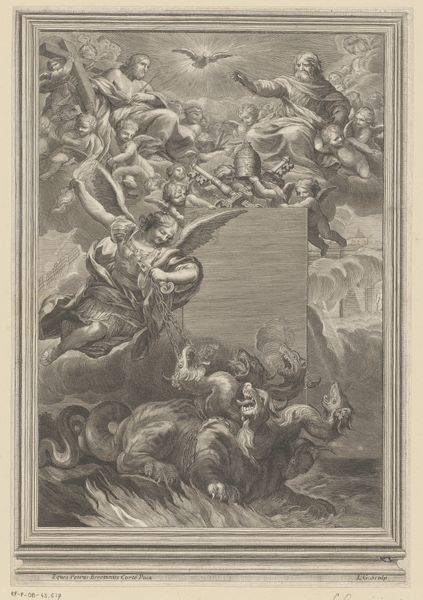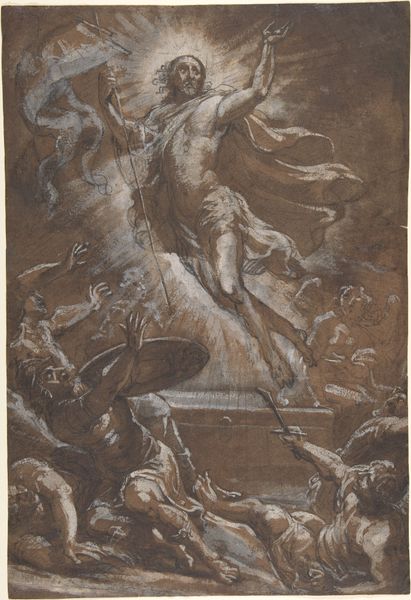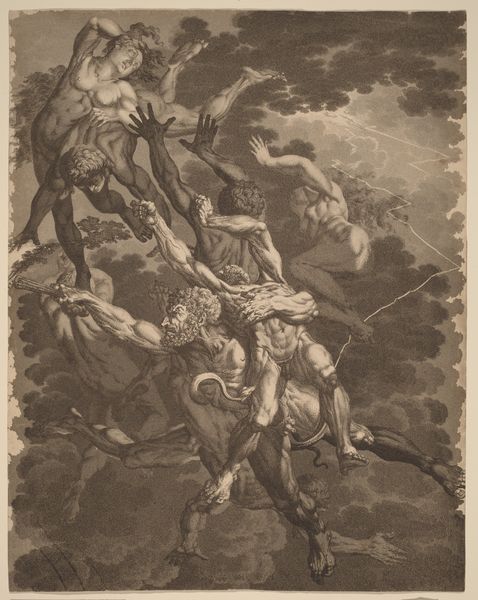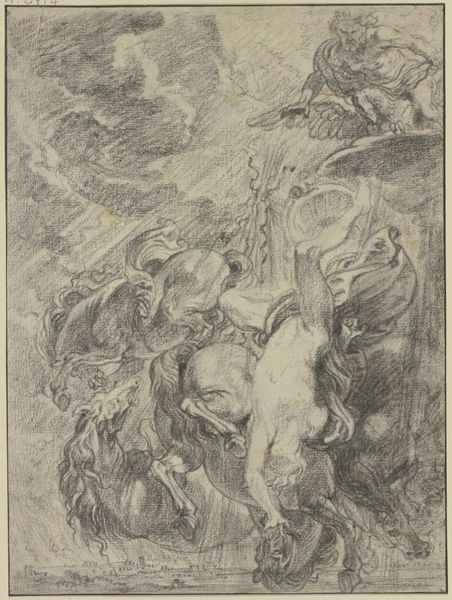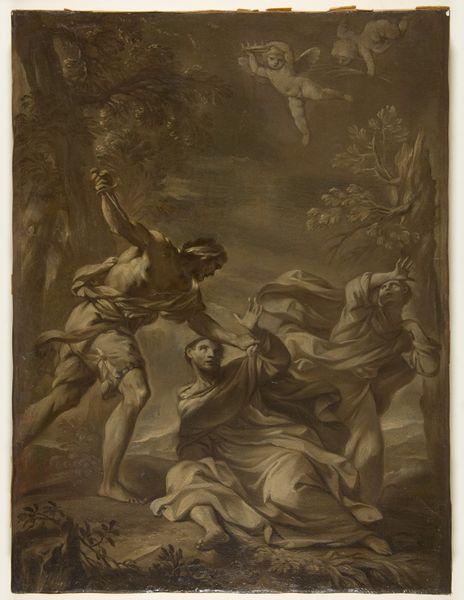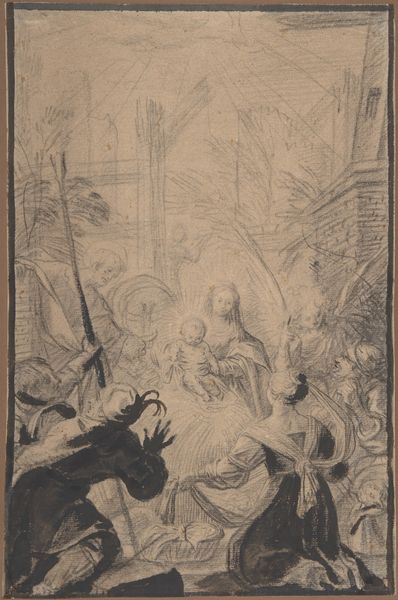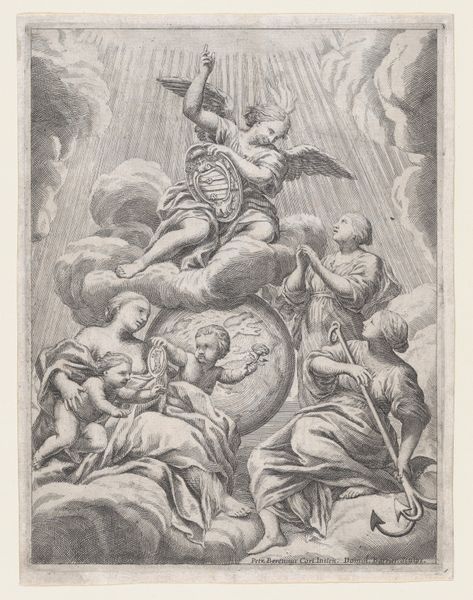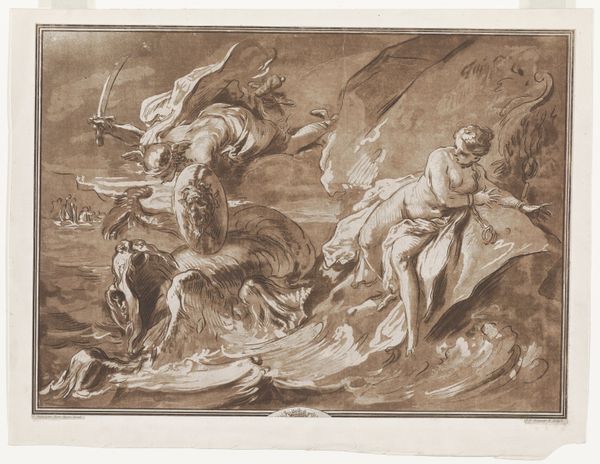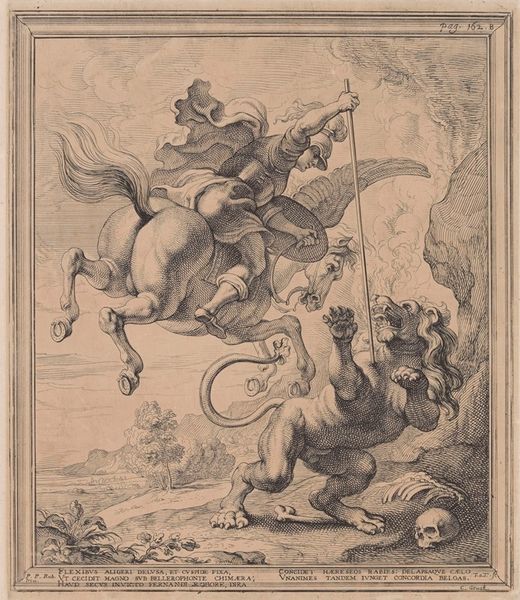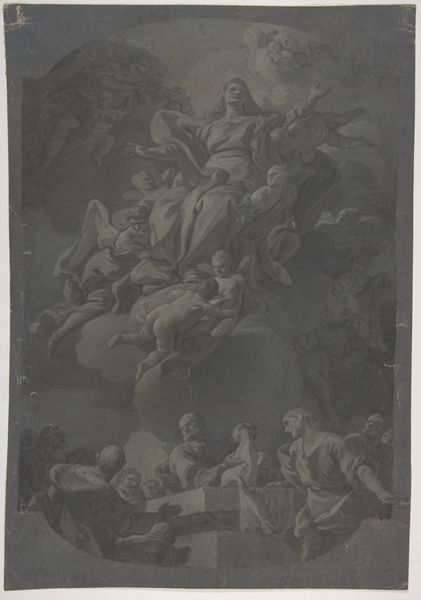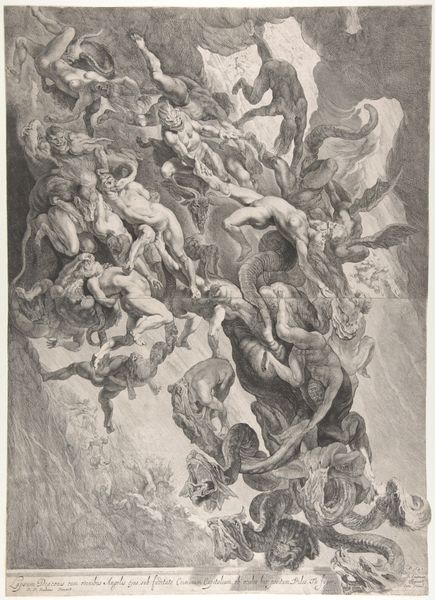
drawing, paper, ink
#
drawing
#
narrative-art
#
baroque
#
landscape
#
figuration
#
paper
#
ink
#
history-painting
#
academic-art
#
watercolor
Dimensions: Overall: 27 x 17.1 cm (10 5/8 x 6 3/4 in.) support: 39 x 27.1 cm (15 3/8 x 10 11/16 in.)
Copyright: National Gallery of Art: CC0 1.0
Curator: Look at this dramatic scene. We have here, in ink on paper, Anthonis Sallaert's rendering of "Saint George and the Dragon." Editor: My first thought is its movement. Everything seems to swirl and surge upward. Even with the muted palette, the action is undeniable. Curator: Absolutely. The dynamic composition reflects the Baroque style. We can view the struggle between good and evil as a reflection of sociopolitical tensions during that period, aligning with the prevalent religious narratives employed to maintain social order. Editor: But what about the material? Look closely at how Sallaert uses the ink. The varied line weights and washes suggest a really skilled handling of the medium. It creates depth and texture. The paper itself, likely a carefully chosen stock, plays a role in how the ink bleeds and settles. The artist's labor is palpable here. Curator: And we shouldn't dismiss the symbolism. The dragon, often representative of paganism and chaos, is being defeated by Saint George, a symbol of Christian virtue. The woman in the upper left could symbolize purity, imploring Saint George for rescue from evil's captivity. The cherubic figures above solidify the divine sanction of George’s victory. Editor: Exactly. I'm particularly interested in the production context of this piece. As a drawing, it suggests preliminary sketches and designs used as templates for other artists to replicate, effectively creating and disseminating propaganda across vast territories through engravings. Curator: A vital observation. Think too, how art played into solidifying ideas about heroism, obedience, and divine right – constructs still potent today, and how certain marginalized identities continue to be excluded from them. Editor: Precisely, by analyzing the materials, labor and techniques, we see how even an ostensibly religious drawing performs essential ideological work, often obfuscating underlying structures of control and inequality. Curator: Examining "Saint George and the Dragon" prompts us to deconstruct the narrative of salvation through the lens of power dynamics, challenging its implications on identity, social hierarchies, and gendered representation. Editor: And seeing it this way means acknowledging both the aesthetic mastery of the artist and the art's participation in larger cultural and material flows of domination. It brings those inherent contradictions of baroque ideology to light.
Comments
No comments
Be the first to comment and join the conversation on the ultimate creative platform.
